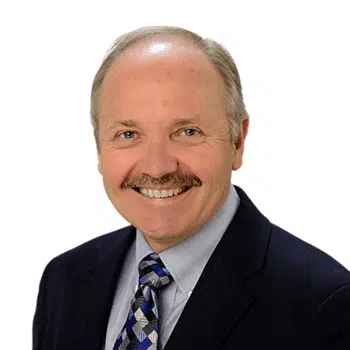Methadone belongs to the family of opioids that includes heroin, morphine, oxycodone, and hydrocodone. It is primarily used for the treatment of withdrawal symptoms of heroin addiction as well as manage the addiction. Because of its gradual mode of action, it does not cause euphoric effects in individuals with opioid use disorder.
Methadone is also used for the treatment of chronic pain. However, methadone has abuse potential similar to morphine and misuse or abuse of methadone can lead to the development of addiction. Treatment of methadone addiction involves detoxification to eliminate the drug from the body, followed by treatment at a rehabilitation center to address the issues underlying the drug abuse.
Article Overview
- Methadone addiction can have negative consequences on all aspects of an individual’s life including their physical and mental health as well as their social lives. Treatment for methadone addiction should be sought as soon as possible.
- Treatment for methadone addiction involves detoxification at a medical detox, followed by treatment at an inpatient or outpatient rehab.
- Detoxification only involves elimination of the drug but not the treatment of the addiction
- Treatment for methadone addiction may involve medications like buprenorphine and naltrexone that reduce drug cravings in combination with behavioral approaches.
- Treatment at an inpatient rehab is generally necessary for severe cases of methadone dependence.
- It is essential to continue treatment at an outpatient rehab and/or participate in support groups to avoid a relapse
- Treatment for substance use disorders is covered by most health insurance plans, but it is essential to ensure that treatment at a specific facility is covered by the insurance plan.
- It is important to make sure that the rehab provides evidence-based (scientifically supported), individualized treatment.
Addiction Treatment Options
Treatment of methadone addiction involves the use of both medications and behavioral therapies, with the best results observed when the two approaches are used in combination. Buprenorphine also binds to opioid receptors like methadone but it has a higher affinity for these receptors while having a weaker effect.
Buprenorphine, due to these properties, can alleviate the withdrawal effects of methadone and reduce cravings. Naltrexone may also be used for the treatment of methadone addiction due to its ability to block opioid receptors. It prevents euphoric feelings in the case of a relapse and reduces the chances of continued use of methadone.
This Season, Give Yourself the Gift of a Fresh Start.
Whether you are struggling with addiction, mental health or both, our expert team is here to guide you every step of the way. Don’t wait— reach out today to take the first step toward taking control of your life.
Behavioral approaches must be used in combination with these medications for recovery from methadone addiction. These approaches include cognitive behavioral therapy, contingency management and motivational enhancement therapy. Cognitive behavioral therapy involves identifying thoughts and behaviors that lead to drug use and learning coping strategies to resist drug use.
Contingency management involves the use of positive reinforcement in the form of gift vouchers or other rewards in exchange for maintaining abstinence and submitting urine samples for drug screens. This is useful in fostering abstinence in the short-term while helping individuals learn coping strategies to refrain from drug use. Motivational enhancement therapy involves counseling directed at increasing the motivation of the individual to engage in treatment and discontinue drug use. These therapies along with 12-step programs are some of the most commonly used behavioral approaches at various treatment facilities.
Some of the treatment facilities or centers available for the treatment of methadone addiction include:
- Medical Detox: Detoxification is the first step in the treatment of methadone addiction and generally results in unpleasant withdrawal symptoms. Treatment at a medical detox provides round-the-clock supervision and care by trained medical staff to help the patient cope with the symptoms of methadone withdrawal.
- Residential Rehab: Residential or inpatient rehab for methadone addiction involves residence at the treatment facility. Treatment for methadone addiction at a residential rehab involves round-the-clock supervision and intensive treatment in a structured environment. Treatment for methadone dependence may involve medications such as buprenorphine and naloxone. These medications are only effective when combined with behavioral therapy involving individual and group therapy, family counseling and participation in support groups. Intensive treatment at an inpatient rehab allows individuals to solely focus on issues related to drug use in a safe and drug-free environment.
- Outpatient Rehab: Outpatient rehab does not require residence at the rehab clinic and allows the individual to resume with their daily life activities such as their work or education. Outpatient rehab may vary considerably in the intensity and the type of treatment provided. An intensive outpatient treatment facility may provide individualized treatment programs similar to inpatient rehab and may involve medications and various forms of behavioral therapy. A standard outpatient facility may place more emphasis on behavioral therapy in a group setting. Outpatient rehab is generally suitable for individuals who have finished inpatient rehab. Outpatient rehab is generally less expensive.
- Dual Diagnosis: Addiction to prescription opioids often co-occurs with psychiatric disorders including depressive and anxiety disorders. Furthermore, the misuse of prescription opioids is also associated with the use of other substances such as alcohol, nicotine, marijuana as well as other illicit drugs like amphetamines and cocaine. In cases of co-occurring disorders i.e. patients with dual diagnosis, the symptoms of one disorder often influence those of the other disorder. Simultaneous treatment of both disorders in an integrated manner is more effective than the treatment of a singular condition. Treatment of co-occurring disorders requires a comprehensive understanding of how each condition affects the other.
- Aftercare & Sober Living: Recovery from a substance use disorder is a life-long process and requires continuation of treatment after finishing rehab. Aftercare treatment is essential to help the individual to adjust to normal life after finishing treatment at rehab and help them resist triggers that lead to drug use. Aftercare generally involves treatment in the form of individual or group therapy at outpatient clinics and participation in support groups such as 12-step programs. Besides behavioral therapy and participation in support groups, sober living communities are another alternative for individuals who have completed inpatient rehabilitation. Sober living communities provide affordable, supportive and drug-free living environments to individuals recovering from substance abuse. Although sober living communities can vary in terms of living conditions and operation, most communities have rules regarding participation in support groups and house meetings, completing chores, abstaining from drugs and submitting samples for drug screens. Sober living communities also provide individuals with the necessary support system that involves individuals also recovering from substance abuse.
How Long Does Rehab Take?
The duration of rehab can vary depending upon the drug use history of the individual and the severity of dependence on methadone. Co-occurring mental health disorders or substance use disorders can increase the duration of treatment. The duration of rehabilitation is also determined by the responsiveness of the individual to the treatment provided. A treatment period of at least 3 months is considered to be essential to avoid relapse.
What Does Methadone Rehab Cost?
The cost of treatment at a rehabilitation facility can be very expensive and is one of the major obstacles in many individuals getting treatment for their substance use disorder.
However, most insurance plans cover at least a part of the cost of rehab. The cost of rehab tends to vary from facility to facility depending upon the quality of care and amenities provided. Treatment at an inpatient clinic may cost anywhere between $200 to $750 per day, whereas treatment at a standard outpatient treatment center may cost around $200 to $400 per week. These are the costs for treatment at rehabilitation centers in general. Treatment of addiction to prescription opioids, unlike some other substance use disorders, also involves the use of medications like buprenorphine and naltrexone that may increase the cost of treatment.
Does Insurance Cover Rehab?
Treatment at an inpatient and outpatient rehab is generally covered by most health insurance plans. The insurance plan may cover either a part of the cost or the entire cost of treatment at a rehab center. It is essential to ensure that the specific rehab center is covered under the insurance plan.
Under the Affordable Care Act passed during the Obama administration, health insurance companies are required to treat substance use disorders such as methadone addiction on par with other medical conditions. Plans purchased through the Affordable Care Act generally cover about 60-90% of the cost of treatment at rehab centers.
Other Ways to Pay
Those who lack health insurance may try to apply for insurance under the Affordable Care Act. Under the Affordable Care Act, insurance companies cannot penalize individuals for pre-existing conditions such as substance use disorders. Some of the other options for paying for rehab include:
- Government Assistance Programs: Financial aid from federal and state agencies can be useful in paying the cost of rehab. The Access to Recovery program provides vouchers that allow individuals to choose the treatment facilities and programs. There are also state-funded rehabilitation centers that provide treatment to low-income families.
- Sliding Fee Programs: Some rehabs may provide treatments on a sliding scale payment system based on the ability of the individual to pay for the treatment.
- Private Pay Programs: Another option is to pay out-of-pocket. Many rehabilitation facilities offer monthly payment or graduated payment plans to help families pay the expenses of treatment.
Choosing a Rehab Facility for Methadone Abuse
Choosing a rehabilitation center for methadone abuse can be a difficult task with many facilities offering similar treatments. A healthcare professional may be a good option to consult before making this decision. It is essential to ensure that the rehabilitation center provides evidence-based (scientifically supported) treatment for methadone addiction dispensed by well-trained and experienced medical staff.
The treatment center should also provide individualized treatment that is tailored according to the specific symptoms and drug use history of the individual. The treatment center should have a low staff-to-patient ratio and the amenities to provide high-quality care. Lastly, one should ensure that the treatment center is covered under the insurance plan to avoid unnecessary expenses.
How Rehab Improves Recovery
Treatment at a rehabilitation center for addiction to prescription opioids involves the judicious use of medications in combination with behavioral approaches. Drugs like buprenorphine and naltrexone can help the individual come off methadone and maintain abstinence.
Behavioral therapy at rehab can ultimately change the perspective of the individual regarding drug use. Behavioral approaches used at rehab can also help individuals gain a better understanding of the psychological and social factors influencing their drug use.
Behavioral therapy at rehab can teach individuals coping skills to deal with triggers such as stress that lead to drug use. Such approaches can also help in the development of a sense of personal responsibility and facilitate their integration into society after finishing rehabilitation.








